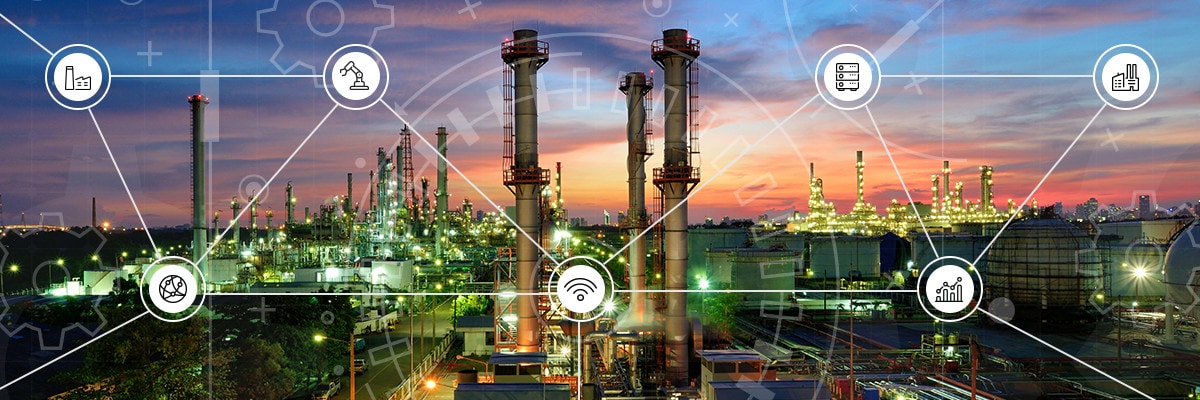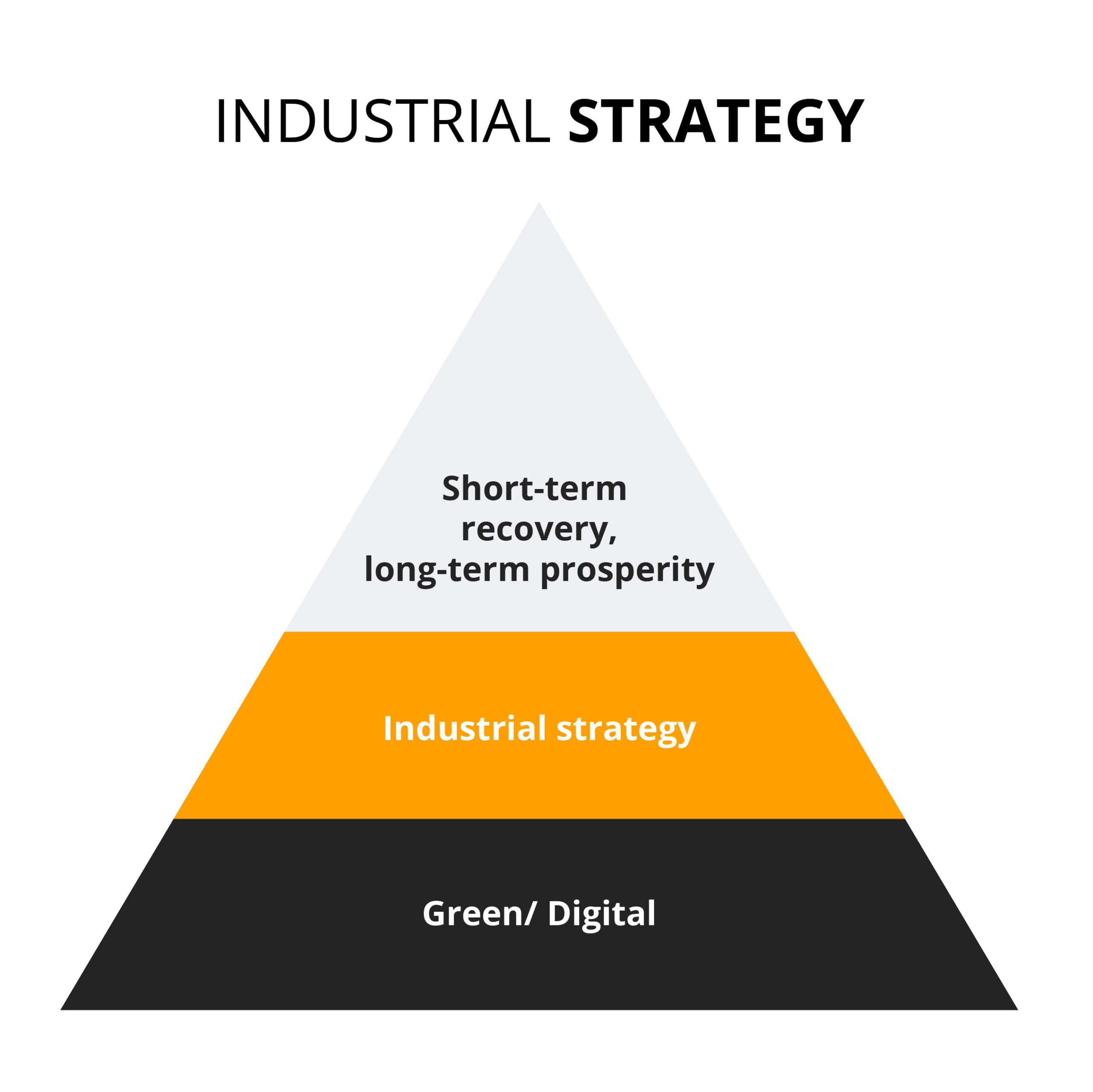
The future of Industry 5.0
We are currently in the midst of a hugely important transformation in the way we make products because of the digitisation of manufacturing. This evolutionary period is so significant in fact, that it’s been dubbed Industry 4.0 as it is seen by many as the fourth revolution that has occurred in manufacturing.
What is Industry 4.0?
The First Industrial Revolution came about at the end of the 18th century due to the mechanisation of production. The Second Industrial Revolution began in the 19th century with the discovery of electricity, which paved the way for mass production. The Third Industrial Revolution exploded at the end of the 1960s with the introduction of computers. Industry 3.0 brought with it computers, automation, robots and AI, but it lacked one key element at the forefront of Industry 4.0: interconnectivity.
Industry 4.0 connected a wide-reaching number of technological advancements in automation and data exchange, cloud computing, cognitive computing, AI and so on. The velocity in which data is exchanged is simply staggering and the paradigm shift in technological policy is breathtaking. Industry 4.0 truly does mark the beginning of the Imagination Age.
However, even though Industry 4.0 has provided us with amazing advancements, there are still aspects we seek to improve, namely, the role of humans in industry. Machines need us to function properly, and even if aspects of their operations can be carried out automatically, having a real, creative human being at the core of any operation and working in synergy with machines is the optimal collaboration that Industry 4.0 just cannot provide.
The Current State of Innovation in Industry 5.0
Industry 5.0 is the ultimate partnership between intelligent humans and smart manufacturing machines. Where Industry 3.0 introduced computers and automation to the world, and Industry 4.0 interconnected these technologies together to improve efficiency and productivity, Industry 5.0 puts the focus strongly on people.
It seeks to give us full creative control of the interconnected systems we developed through Industry 4.0, which will allow us to work alongside robots and smart machines. It’s all about helping us to work faster, smarter and better by leveraging advanced technologies such as the Internet of Things (IoT) and big data.
Transformation is key as we move through these industrial revolutions. The 2021 EISR Report for Industry 5.0 states that:
Transformation means, first of all, mainstreaming resilience, sustainability, regenerative and circular economic principles in all of its policies, and in the implementation of those policies.
Industry 5.0 is highly focused on both industry and society and will help shape the way that these are both transformed in the coming technological age.
There are several key elements to consider in Industry 5.0
Industry 5.0 is aimed at supporting, not replacing, humans – Skynet aside, it is only natural to be a little nervous of robots and AI. The thought of people losing their jobs, economic times of hardship, and the diminishing importance of “humans” are all typical worries that come to mind.
However, Industry 5.0 seeks to provide a space for humans and robots/AI to collaborate together in order to innovate. It is not aimed at superseding humans, but to allow creative people to develop new technologies and ideas assisted by technology.
The balance between efficiency and productivity is key in Industry 5.0 – Industry 4.0 began the process of building efficiency and productivity, and Industry 5.0 seeks to truly optimise it. Marc Beulque, Vice President of Global Operations at Rogers explained that “man and machine must be interconnected to meet the manufacturing complexity of the future in dealing with increasing customisation through an optimised robotised manufacturing process.”
If there’s a better solution to something, why not explore it? Industry 5.0 is affording us the unprecedented opportunity to develop our world in a hugely positive way. Sustainability is the cornerstone of Industry 5.0 – Industries and governments are all working to the sustainable development goals (SDGs) set out in the UN’s Agenda 2030, and funds are being allocated now to companies with strong environmental, social and governance (ESG) policies.
Sustainability is the key factor in these political policies, business models and climate control measures and Industry 5.0 can, and will, be the driving tool to a sustainable future. Innovation will be driven not only by performance, but its sustainable impact on industry, commerce, society and the world around us.
But what are the key transformations as we move from Industry 4.0 to Industry 5.0, and what challenges might we encounter in attempting to make this transition?
One such difference between Industry 4.0 and Industry 5.0 focuses on Challenge Driven Innovation (CDI). CDI is being used by companies and organisations all around the world to work towards solving long-term societal challenges to meet the sustainability goals that were set out in Agenda 2030.
It uses ‘challenge statements’ to identify key focus areas in order to solve any given challenge. In this manner, we can truly harness the next stage of revolution, Industry 5.0, by identifying an issue, using CDI to focus on the specifics of what the challenge is and who is involved, then use this information to make innovative changes and end up with the desirable solution.
The Role of Industry 5.0 for a Sustainable Future
Industry 5.0 is being leveraged to create solutions across the globe. The independent expert report published in 2021, A Transformative Vision for Europe, details how Industry 5.0 will be used to transform Europe towards fully sustainable industries, governed by systematic transformations across a wide-range of sectors.
This 2021 report goes into great depth on how we can use technology born of Industry 5.0 to fight climate change and avoid the complete collapse of our biodiversity, to transform the lives of 8 billion humans around the world sustainably, and to build resilience into the economy that will birth new ecosystems.
Climate change is a hugely topical issue in the world these days and Industry 5.0 will allow us to create sustainable, clean systems of manufacturing, transportation, logistics and energy. The EU has already entered into the European Green Deal, which sets out the core goals of having:
- no net emissions of greenhouse gases by 2050,
- economic growth decoupled from resource use,
- no person and no place left behind.
This Green Deal was the first step of the EU Industrial Strategy which outlines twin ecological and digital transformations aimed at focusing on the industrial ecosystems currently affected by the global crisis, then covering the priority areas identified in the Green Deal, before finally pushing forward to other ecosystems further down the line.
Sustainability is key, and Industry 5.0 encompasses this philosophy by putting it at the centre of future operations. The EU Industrial Strategy focuses on a greener, low-carbon Europe, a more social and inclusive Europe, a more competitive and smarter Europe.
This way of thinking is deeply embedded into Industry 5.0, and has even reached as far as the finance industry, with financial giants Aviva pledging to become a Net Zero company by 2040. Aviva is tackling the climate crisis head on and this will only drive others in industry to follow suit, highlighting the synergy that Industry 5.0 and sustainability embody.
Industry 5.0 Across Other Sectors
Industry 5.0 seeks to transform the lives of everyone on Earth by revolutionising the use of AI in our daily lives and adopting a human-centric approach to digital technologies that make our lives easier and more beneficial in every way. With the introduction of more AI and robotics, the EU has also set out a Skills Agenda and Digital Education Action Plan for up-skilling and reskilling European workers (particularly in terms of digital skills).
By improving our knowledge base and providing opportunities to up-skill, people will be able to take advantage of the innovative advantages of Industry 5.0 and use their creative skills in high-value positions of industry in a positive way. Sectors such as healthcare will be revolutionised through human-centric solutions that use the Internet of Things (IoT) and AI to diagnose, treat, and research the various diseases and disorders that plague our world today.
The health industry is crying out for solutions that offer mass personalisation but with a human touch, and Industry 5.0 gives us the opportunity to have interconnected machines which optimise both productivity and efficiency, while at the same time, increasing safety by reducing risk and minimising waste reduction.
Summary
There is obviously huge potential in the emergence of Industry 5.0 that we should not only harness, but drive forward. A 2021 report by the European Commission details the various benefits and considerations on Industry 5.0, what it means for the EU and how it should be harnessed for our futures. “The transition towards Industry 5.0 has already started” according to the European Commission, and they have laid out the next steps that must be taken in order to bring about this positive transition, which include:
- increasing awareness in industry,
- the implementation of technologies that are needed for Industry 5.0,
- identifying existing actions and opportunities for Industry 5.0,
- encouraging and driving innovation,
- using the key features of Industry 5.0 as the guiding principles of the development of technologies,
- governance and guidance towards this new future that Industry 5.0 will bring.
It is clear that Industry 5.0 is the future, and one that will shape our lives for generations to come. As it permeates out into every corner of the planet, it is our responsibility to grab hold of it enthusiastically and do our best to apply it to our own technological sphere. While we may be just at the tip of the iceberg right now, this hugely exciting transition is something we can all get on board with to create a better, more innovative, and more beneficial future for every single human alive today.
_______________________________
SPECIAL CONTRIBUTION
The article was written with contribution from Richard Tuffs, a strategic thinker and expert on EU affairs, particularly in the area of research and innovation policy, regional policy, smart specialisation and regional economic development. He has served on many advisory boards for European projects.






